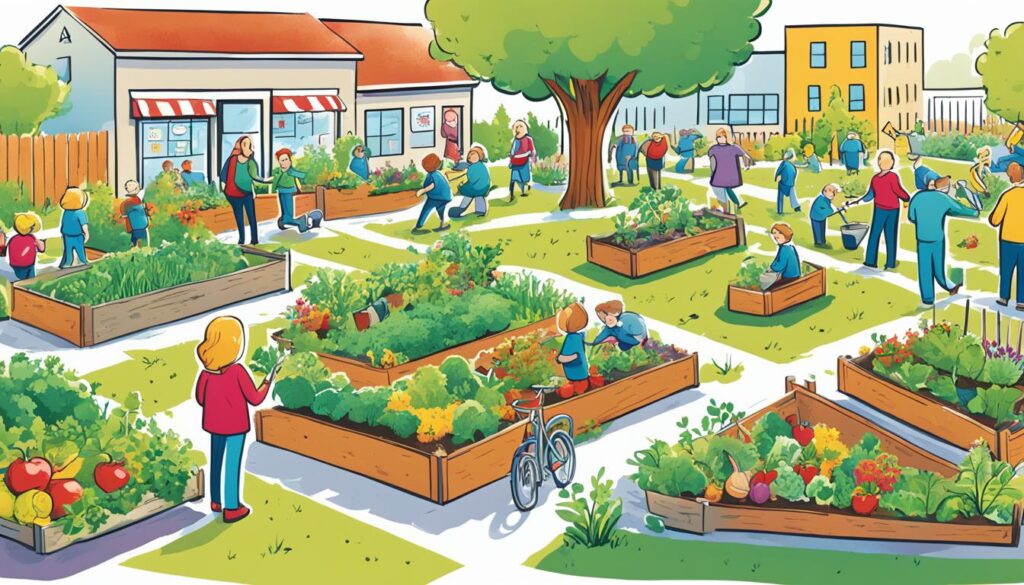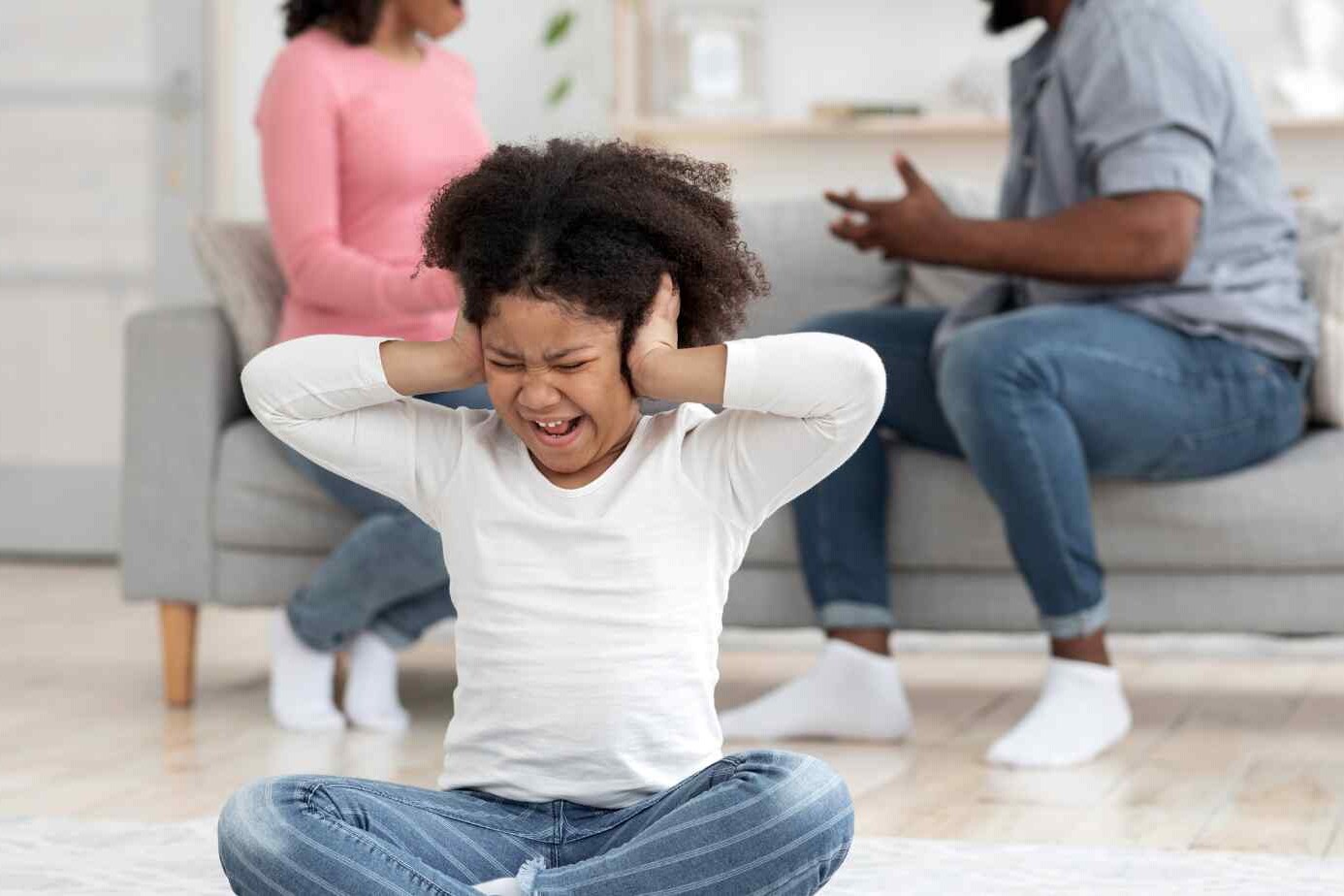Adverse childhood experiences, or ACEs, are a big issue in the U.S. They affect millions of people. These experiences can be traumatic and happen during our early years (ages 0-17). They include things like physical and emotional abuse, and not having a stable home.
It’s important to understand how ACEs affect us. They can shape our health, happiness, and how we fit into society as adults.
As a society, we need to see how common ACEs are. About 64% of U.S. adults have had at least one ACE before they were 18. This shows how widespread childhood trauma is. We need to act fast to help.
By talking about ACEs, we can help people, families, and communities. We can build resilience, heal, and stop trauma from passing down through generations.
Next, we’ll look into ACEs more. We’ll see their effects on health and how they can make things worse for some groups. We’ll also talk about how to stop ACEs from happening. We’ll focus on protective factors, early help, and community efforts.
Together, we can make a future where all kids can grow up without the burden of ACEs.
Table of Contents
ToggleWhat are Adverse Childhood Experiences (ACEs)?
Adverse Childhood Experiences, or ACEs, are traumatic events that happen before a child turns 18. These can include abuse, neglect, and living in a dysfunctional home. Events like violence, seeing domestic violence, or having a family member with substance abuse count. It’s important to know about ACEs to understand their long-term effects on people and communities.
Types of ACEs
ACEs can be many things, such as:
- Physical, emotional, or sexual abuse
- Physical or emotional neglect
- Household mental illness, substance abuse, or domestic violence
- Parental separation or divorce
- Incarceration of a household member
Prevalence and Statistics
ACEs are very common in the U.S. Research shows that about 64% of adults have had at least one ACE. And nearly one in six (17.3%) have faced four or more. This shows how widespread childhood adversity is and the need for big solutions to tackle this health issue.
Long-term Effects of ACEs
Adverse Childhood Experiences (ACEs) deeply affect a person’s health and well-being. They can impact both children and adults. It’s important to know how ACEs affect us to fight this hidden issue and build resilience.
Health and Well-being Outcomes
ACEs are linked to many health problems. These include a higher chance of getting hurt, having sexually transmitted infections, and being involved in sex trafficking. They also increase the risk of chronic diseases like cancer, diabetes, and heart disease. Sadly, ACEs are connected to more suicidal thoughts and attempts.
Brain Development and Toxic Stress
ACEs and toxic stress harm a child’s brain, immune system, and stress response. This can make it hard for kids to focus, make decisions, and learn. It stops them from reaching their full potential. We must focus on helping children overcome these effects for their health and growth.
Knowing the lasting effects of ACEs helps us find ways to help. We can create safe places that help kids heal and grow strong. This is key to ending the cycle of trauma and making sure every child can succeed.
ACEs Childhood Trauma: The Hidden Epidemic
Adverse childhood experiences (ACEs) and trauma are a hidden epidemic in the U.S. They affect individuals, families, and communities deeply. Yet, this critical issue often goes unnoticed or is not fully understood.
Childhood trauma can take many forms, like physical, emotional, or sexual abuse. It can also come from a tough home environment, such as parental substance abuse or mental health issues. We need a trauma-informed approach to tackle this issue. This approach recognizes the big impact of ACEs and the need for evidence-based solutions.
Recent studies show that about two-thirds of adults have faced at least one ACE. This fact shows how widespread the problem is. It highlights the need to tackle the ACEs epidemic seriously.
By making people aware of ACEs and childhood trauma, we can reduce stigma around this issue. This helps communities use effective, trauma-informed strategies. It supports healing, builds resilience, and breaks the cycle of trauma. This leads to a healthier, more fair society for everyone.
ACEs and Academic Performance
Adverse Childhood Experiences (ACEs) deeply affect a child’s school performance and future education. Kids with more ACEs often find learning hard and behave differently. This makes school tough for them.
Impact on Learning and Behavior
ACEs cause toxic stress and harm brain development. This hurts a child’s ability to do well in school. Studies show kids with more ACEs tend to get lower grades and might repeat a grade.
They also face a higher chance of ADHD and behavior issues. The effects of ACEs go beyond just learning. They make it hard for kids to concentrate, control their feelings, and get along with others in school.
This can lead to lower grades and a higher chance of leaving school early.
It’s important to tackle how ACEs affect school performance. We need to help all kids reach their full potential. By understanding ACEs and education, we can create better support systems and help kids overcome their challenges.
ACEs and Socioeconomic Disparities
Adverse Childhood Experiences (ACEs) don’t affect everyone equally. People from lower income groups and some racial/ethnic groups face more ACEs. This shows how social factors greatly influence health outcomes for kids and families.
Research links ACEs to lower income and more income inequality. Kids in poverty or financially unstable homes face more trauma. This includes physical abuse, neglect, and violence. These issues come from the social and economic conditions of their homes and communities.
ACEs also affect families for generations, making things worse and increasing racial gaps. Kids from poorer and minority backgrounds often suffer from ACEs’ long-term effects. These effects include poor health, lower school success, and higher risks of substance use and crime.
We need to fix the socioeconomic and racial gaps in ACEs to ensure health equality. Leaders and service providers must work together to overcome barriers and social unfairness. This means focusing on early childhood support, helping families, and giving them resources to bounce back.
Resilience and Protective Factors
Adverse childhood experiences (ACEs) can have big negative effects, but some kids show amazing resilience. Having a trusted adult, like a parent or family member, can really help. This person acts as a shield against the bad effects of ACEs.
Trusted adults are key, but so are the quality of a child’s relationships. These strong bonds help kids bounce back from tough times. By focusing on these protective factors, we can help kids grow up healthy and strong. This lets them deal with the tough parts of life.
The Role of Trusted Adults
Trusted adults, like parents or caregivers, are very important. They help build resilience factors in kids. These adults create a safe, loving space. They offer emotional support and act as role models.
Attachment and Secure Relationships
How well kids attach to others is a big protective factor. Secure, loving relationships help kids develop important skills. These skills help them handle life’s ups and downs.

Knowing how trusted adults and secure relationships help build resilience is key. We can support kids by focusing on these areas. This helps them deal with the lasting effects of childhood trauma.
Preventing ACEs: A Proactive Approach
Stopping adverse childhood experiences (ACEs) needs a proactive plan. This plan makes sure all kids have safe, stable, and caring places to grow. It takes teamwork from healthcare, education, social services, and community groups. By using proven methods and policies, we help families, encourage good parenting, and build resilience in kids and communities.
Promoting Safe, Stable, and Nurturing Environments
Stopping ACEs begins with building strong, resilient communities. These communities put kids and families first. This means doing many things, like:
- Strengthening family support systems and parenting programs for healthy child growth
- Increasing access to top-quality early childhood education and care
- Using trauma-informed practices in schools and community places for safety and support
- Investing in community programs that tackle the causes of trauma, like poverty, violence, and unfairness
Creating safe, stable, and caring places helps prevent ACEs. It sets the stage for a lifetime of good health and happiness.
Early Intervention and Support for Families
Addressing Adverse Childhood Experiences (ACEs) needs a proactive approach. We must focus on early intervention and support for families. Trauma-informed services can help break the cycle of generational trauma. They also support healthy child development.
Home visiting programs are key to early intervention. They connect families with professionals who offer support, parenting tips, and resources. This approach helps families deal with ACEs and build skills for a safe, stable home for their kids.
Family support programs are also vital. They provide parenting classes, mental health services, and community resources. These services empower parents, strengthen family bonds, and help them tackle ACEs. This prevents trauma from passing down through generations.
Investing in early intervention and family support builds resilience and healing. It breaks the cycle of ACEs. This approach helps families and communities, leading to a brighter future for everyone.
Breaking the Cycle: Addressing Intergenerational Trauma
Dealing with the long-term effects of childhood trauma needs a deep, trauma-focused plan. We must see the big picture of childhood trauma to make lasting changes. This means using family-focused help, healing at the community level, and tackling the big issues like poverty and history that keep trauma going.
We can stop the cycle of trauma by working on many levels. This means helping individuals, families, and communities. With trauma-informed care, families can heal and learn to stop the trauma cycle.
Helping families is key to ending intergenerational trauma. These efforts help parents and caregivers build strong bonds with their kids. By offering full support and skills, we help families become resilient and break free from trauma.
Supporting individuals and families is just part of the solution. We also need to heal at the community level. This means working together on projects and with local groups to overcome the big barriers that keep trauma going.
To really stop intergenerational trauma, we need a full, team effort. By tackling the deep causes of trauma and helping people, families, and communities, we can build a fair, strong society. This society will support healing and well-being for everyone.
Community-Based Strategies and Resources
Addressing ACEs and promoting well-being needs a team effort. We must use our community’s strengths and resources. This way, we can make our society more resilient and fair.
One important step is to create trauma-informed policies and services. These should help families and communities hit hard by ACEs. They should offer care and resources that meet the specific needs of people and families.
It’s also key to make it easy for people to find help. We can do this by working with local groups, schools, and health centers. This ensures those affected by ACEs can quickly get the support they need.
By focusing on community action, we can fight this hidden issue together. Working together and using our neighborhoods’ strengths helps us heal, grow stronger, and build a better future for kids and families.

- Develop trauma-informed policies and programs
- Provide access to evidence-based, trauma-informed care
- Create accessible referral pathways to community resources
- Leverage the collective strengths of local organizations and providers
- Foster healing, build resilience, and support families and communities
Conclusion
Adverse childhood experiences (ACEs) are a big public health issue in the U.S. They affect individuals, families, and communities deeply. By understanding ACEs, we can create strategies to tackle this challenge.
It’s crucial to focus on childhood trauma. ACEs lead to health problems, mental health issues, and substance abuse. They also affect brain development and how well kids do in school. This shows we need to act to help our children’s overall well-being.
We must work together to help kids be resilient and support families. We need to tackle the unfairness that leads to trauma in childhood. By making safe places for all kids, we can stop the cycle of trauma. This will help build a fair society where everyone can succeed. Let’s work together to improve the lives of those with ACEs and make a better future for all.
FAQ
What are Adverse Childhood Experiences (ACEs)?
ACEs are bad events that happen to kids (0-17 years old). They include violence, abuse, neglect, and other stressors. About 64% of US adults have had at least one ACE before they turned 18.
What are the different types of ACEs?
ACEs include violence, abuse, or neglect. They also include seeing violence at home or in the community. Other types are having a family member attempt or die by suicide.
ACEs also mean growing up in a home with substance abuse or mental health issues. Or, it means living in a home where parents separate or where family members are in jail.
How prevalent are ACEs in the United States?
In the US, about 64% of adults have had at least one ACE before they were 18. Nearly one in six adults have had four or more ACEs.
What are the long-term effects of ACEs on health and well-being?
ACEs can harm health and well-being into adulthood. They increase the risk of injury and chronic diseases like cancer and diabetes. They also raise the risk of suicide.
ACEs can hurt brain development and immune systems. This can make it hard for kids to focus, make decisions, and learn.
How do ACEs impact academic performance and educational outcomes?
Kids with more ACEs often struggle in school. They might get lower grades, repeat grades, or have ADHD and behavior problems. ACEs can make it hard for kids to do well in school.
Are there disparities in the prevalence of ACEs?
Yes, some groups face more ACEs than others. ACEs are more common in lower-income and some racial/ethnic groups. This shows we need to tackle social and economic issues to reduce ACEs.
What factors can promote resilience and mitigate the effects of ACEs?
Having a trusted adult can help protect kids from ACEs. Good relationships and a strong bond with a parent or caregiver can also help kids bounce back from trauma.
How can we prevent ACEs and support families affected by childhood trauma?
We need a community effort to prevent ACEs and help families. This means making policies and programs that support families. It also means giving people the help they need to recover from ACEs.
By using community strengths, we can make society more resilient and fair for everyone.
Source Links
- https://www.cdc.gov/aces/about/index.html – About Adverse Childhood Experiences
- https://www.cdc.gov/vitalsigns/aces/index.html – Preventing Adverse Childhood Experiences
- https://www.ncbi.nlm.nih.gov/pmc/articles/PMC8882933/ – The Impact of Adverse Childhood Experiences on Health and Development in Young Children
About The Author

This article is medically reviewed by Dr. Chandril Chugh, Board-Certified Neurologist, providing expert insights and reliable health information.
Dr. Chandril Chugh is a U.S.-trained neurologist with over a decade of experience. Known for his compassionate care, he specializes in treating neurological conditions such as migraines, epilepsy, and Parkinson’s disease. Dr. Chugh is highly regarded for his patient-centered approach and dedication to providing personalized care.
→ Book a consultation to discover which remedies suit your needs best.




